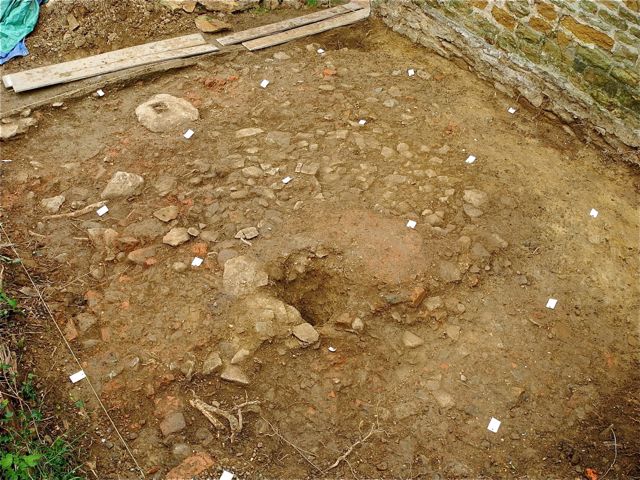

A cobbled yard with the setting for a timber anvil base and the remains of a hearth. A rather fine stone and brick cess pit, the ranging rods are aligned on the OS National Grid (See below)
Now here's something interesting. I was on a course a few weeks ago about using geographical information systems (GIS) software and in particular a piece of free kit for the Mac known as QGIS. This
is all about scanning historic maps and stretching them to fit modern
digital maps. The number of different map projections supported is
astonishing. It occurred to me that you could use this on a smaller scale as a cheaper and easier alternative to rectified photography. What I've done is marked on the ground the National Grid at 1 metre intervals then taken an oblique view
and by georeferencing those points drop the picture onto the OS grid.
Not only is the photograph accurately placed within the country but it
now shows the equivalent of a vertical view with lens distortion also
effectively removed. This could prove very useful, the photo below
shows an early attempt at getting it right..
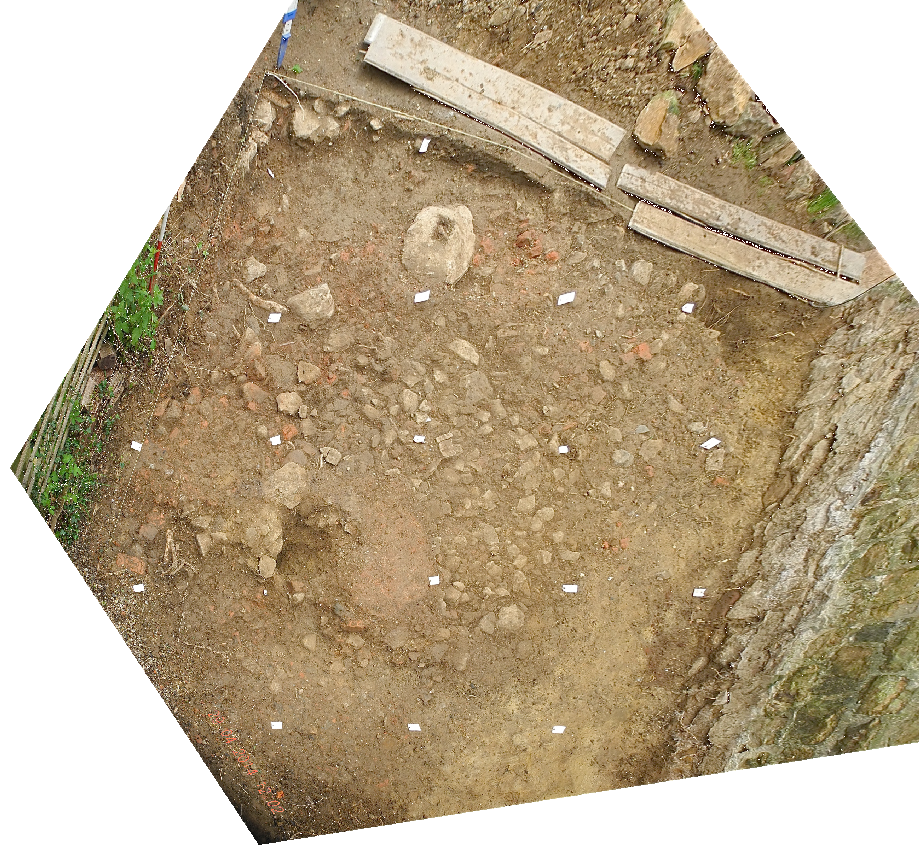
Down at Enstone we had 4 days in total some given over to battling the encroaching vegetation but most of the time was spent on the bottom corner where the arrangement of exposed walling became increasingly complex with a new alignment uncovered heading off along the lower bank of the canal. It looks as if the original north-south wall was a revetment for terracing and we are expecting something similar to crop up again a little further down the slope.
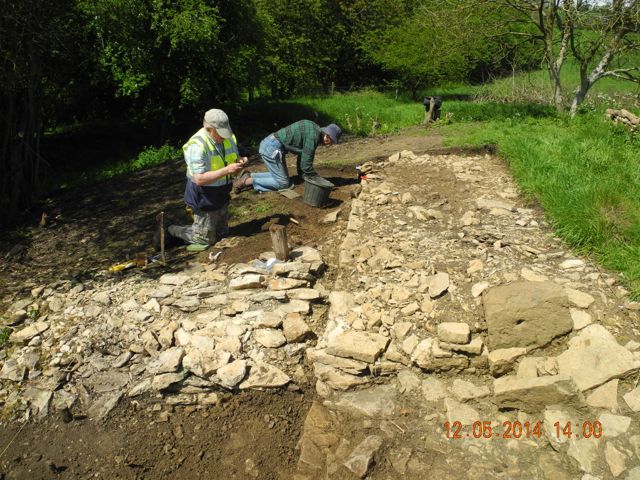
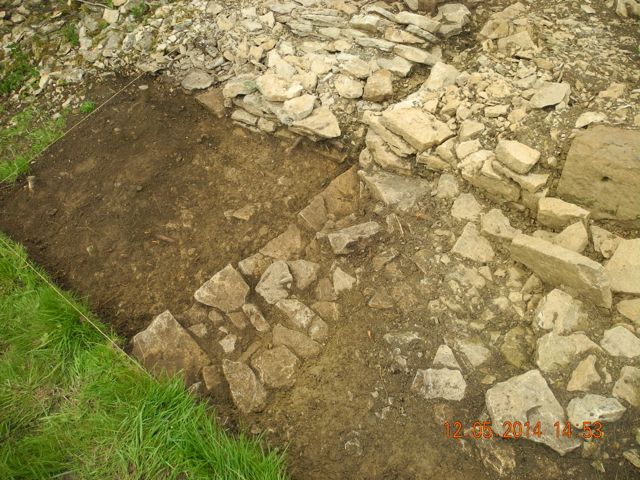
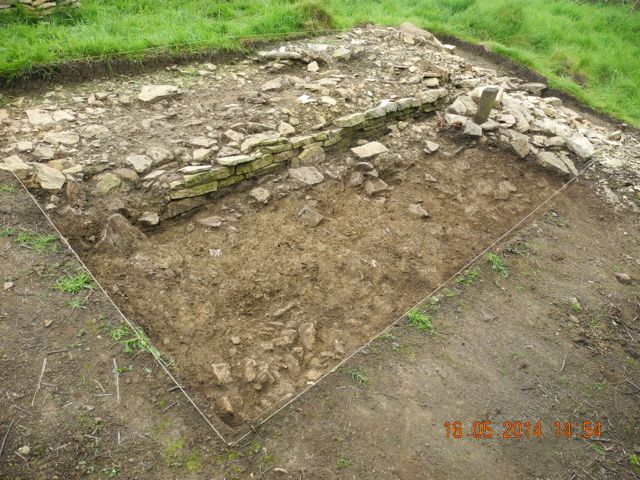
Enstone, the north-west corner: Peter examines a find, the new wall heading off towards the bottom left hand corner, the area below the revetment wall including loose rubble in the foreground which may be an additional feature.
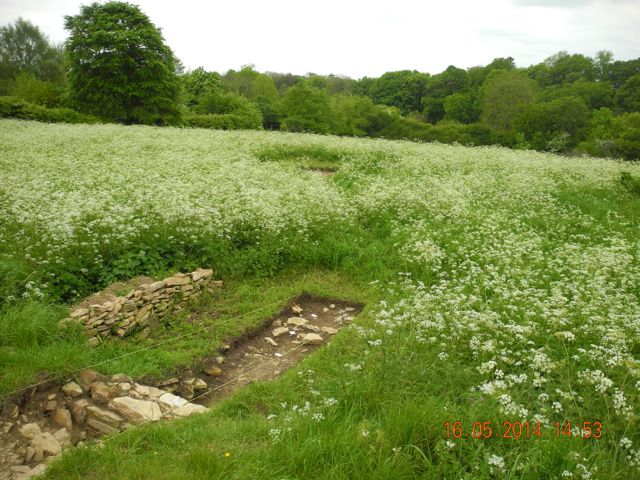
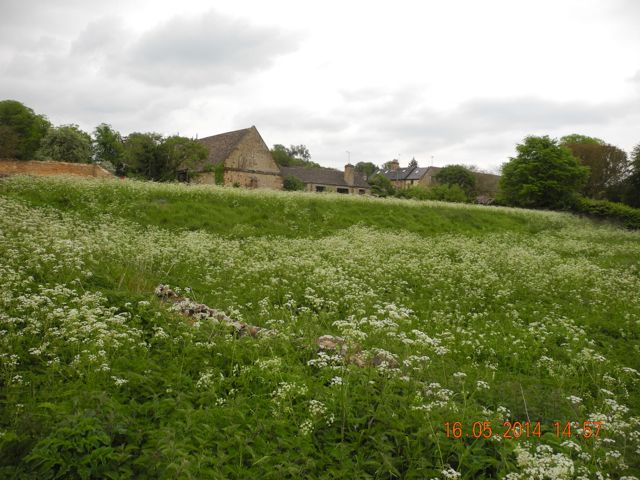
Vegetation: The top section and the path to the middle area. The barn amidst a sea of umbilifers, interesting that they don't like the slopes too much.
Back at Hanwell we had a couple of
rained off days but work continued on the second sluice with more new
walls. Peter uncovered one under a deep deposit of hill wash which
looked for all the world like natural. It's always difficult
with dumps of rubble, there's a tendency to see structures where none
exist. We extended the open area a further metre to the east to examine
suggestively piled blocks of stone which turned out to be... nothing.
however we did have to leave it at an exciting point where some hints
of a possible buttress were starting to emerge, probably still all in
our imagination!

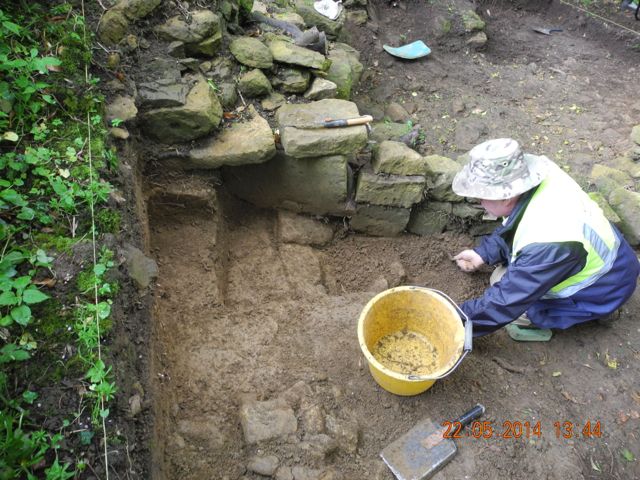
Hanwell: Mike demolishes a pile of stones with a will. Peter examines three stones in a line (remember that's the definition of a wall) in the narrow cut in front of him.
We also took steps towards
organizing a much larger project for the last two weeks in August where
we plan to take on, amongst other things a large section cut through
the Great East Terrace as I have decided it shall be rather grandly
named (see last month for the profile). This included publishing notification on the Current Archaeology and CBA web-sites and within the week we had had a dozen responses from all over the world. It's looking good.
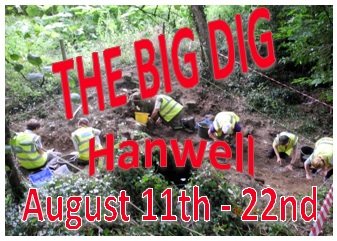
Work for May came to a slightly
precipitous ending after the third week as we then had to prepare for
our study tour of Tuscan gardens. This is a fairly complex undertaking
as we need to get into a number of grade one tourist attractions and
fiddle about with their Renaissance plumbing. Should prove fascinating
but it puts us out of action until well into June.

The Giant of the Apennines at Pratolino, don't go there, he's currently swathed in scaffolding but should be perfect for us to climb all over him.